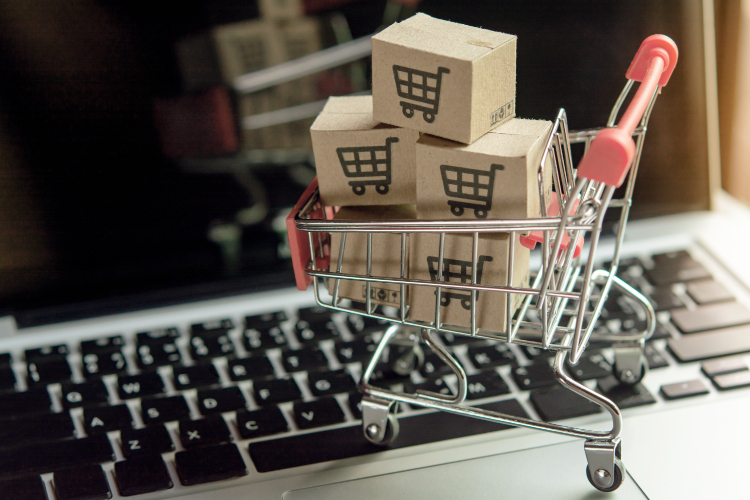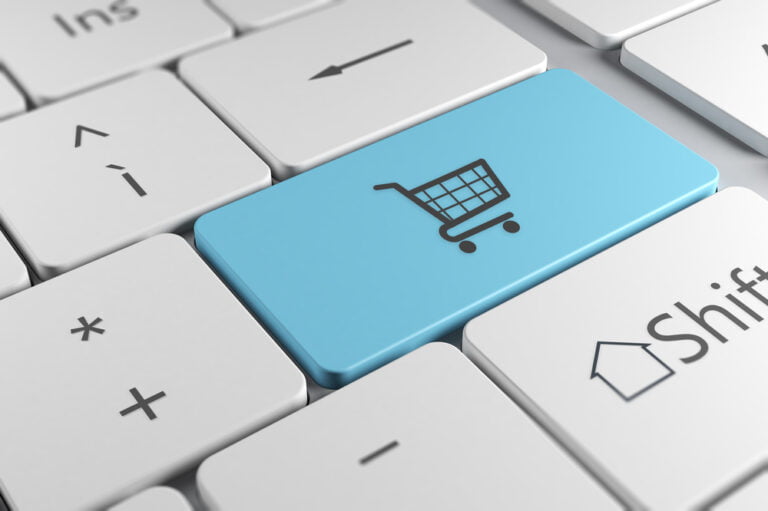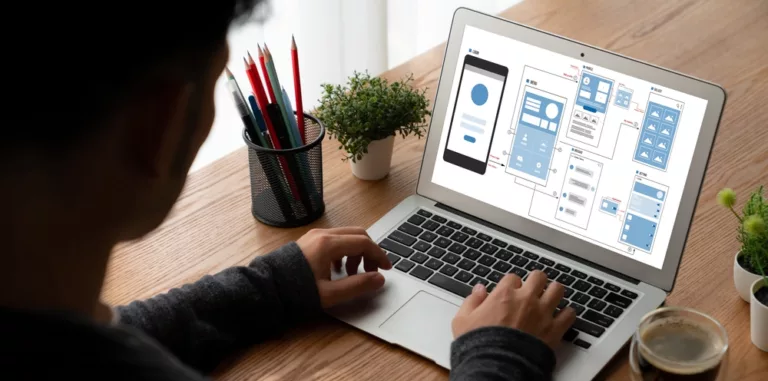How to Sell on Facebook Shops and Marketplace
Selling online is easier than ever, thanks to platforms like Facebook Shops and Facebook Marketplace or even Youtube. If you’ve ever dreamed of turning your passions—like creating jewelry, selling thrifted clothes, or flipping gadgets—into money, this is your chance! Here’s how to crush it on Facebook Shops and Marketplace in 2024, explained in a way that even your little cousin could understand.
What Are Facebook Shops and Facebook Marketplace?
Let’s break it down:
Facebook Shops
Facebook Shops is like setting up your very own online store inside Facebook and Instagram. It’s perfect if you want to sell multiple products and build a business. Think of it as your personal website but built right into social media.
Features of Facebook Shops:
- Customizable Storefront: You can add your logo, banners, and product collections to make your shop look unique.
- Checkout Options: Buyers can shop directly from your store, either on Facebook, Instagram, or through your website.
- Integrated with Instagram: If your business is active on Instagram, you can tag your products in posts or stories, making it easy for customers to buy.
Perfect For:
- Entrepreneurs and small businesses selling products like clothing, accessories, handmade crafts, or gadgets.
Facebook Marketplace
Facebook Marketplace is more like a giant virtual flea market where anyone can buy or sell. It’s casual and great for decluttering or making quick sales locally.
Features of Facebook Marketplace:
- Local Sales: Buyers are usually nearby, so you can skip the hassle of shipping.
- Quick Listings: Upload a photo, add a price and description, and you’re done!
- Variety of Categories: You can sell almost anything, from furniture and clothes to cars and electronics.
Perfect For:
- Selling pre-loved items like clothes, furniture, or electronics.
- Finding buyers quickly for local pickup.
The Difference?
| Feature | Facebook Shops | Facebook Marketplace |
|---|---|---|
| Purpose | Build a professional online store | Casual, one-off selling |
| Audience | Global (via Facebook & Instagram) | Local (buyers near your location) |
| Best For | Small businesses or entrepreneurs | Individuals selling used items |
| Checkout Options | On Facebook, Instagram, or website | Direct messaging or Facebook shipping |
| Customization | Customizable storefront | Basic, no branding |
Whether you want to start a business or simply make money from old stuff, Facebook has you covered with these two platforms.
Why Sell on Facebook?
Selling on Facebook is like having access to one of the biggest shopping malls in the world, where millions of people browse, shop, and connect every day. Whether you’re starting a business or just trying to sell some pre-loved items, here are the reasons Facebook is the perfect place to make money.
1. Huge Audience
Facebook has over 2 billion active users, meaning your potential customers are already there. Whether you’re selling locally through Marketplace or globally through Shops, you’re tapping into a massive crowd.
Why It Matters:
The more people see your products, the better your chances of making sales. Facebook connects you with buyers who might be looking for exactly what you’re selling.
2. Free to Use
Setting up a Facebook Shop or listing on Marketplace costs nothing. You only pay small transaction fees when you make a sale. That’s way cheaper than starting your own website or renting a physical store.
Why It Matters:
You can test your products or selling skills without investing a ton of money upfront.
3. User-Friendly Tools
Facebook makes it super easy to:
- Post your items with photos, descriptions, and prices.
- Chat with potential buyers through Messenger.
- Track your sales and manage your shop through tools like Commerce Manager.
Why It Matters:
Even if you’re new to selling, Facebook’s tools make it feel straightforward and stress-free.
4. Local and Global Reach
- Marketplace: Connects you with buyers in your area for local sales. No need to worry about shipping!
- Shops: Allows you to sell worldwide if you’re ready to ship items.
Why It Matters:
Whether you’re selling locally to declutter or globally to grow a business, Facebook has options for both.
5. Built-In Social Media Marketing
Facebook isn’t just a marketplace—it’s a social media giant. That means you can:
- Promote your products directly to followers.
- Run ads to reach new customers.
- Engage with your audience by posting updates, sharing stories, and responding to comments.
Why It Matters:
You can easily build a community around your brand and turn casual shoppers into loyal fans.
6. Perfect for All Sellers
Whether you’re:
- A beginner looking to sell old clothes or gadgets.
- A hobbyist wanting to monetize your crafts.
- A business owner aiming to grow your brand…
Facebook has tools and platforms for every level.
Why It Matters:
You don’t need to be an expert or a business tycoon to start selling.
7. Trust and Convenience
Facebook offers secure payment and shipping options to make transactions safer. Plus, buyers and sellers can see each other’s profiles, making it feel more personal and trustworthy.
Why It Matters:
People are more likely to buy from you if they feel secure, and Facebook helps you build that trust.
Bottom Line: Facebook isn’t just a place to share memes and chat with friends—it’s a powerful platform for making money. Whether you’re selling casually on Marketplace or building a brand with Shops, Facebook’s huge audience, free tools, and trusted features make it one of the best places to sell in 2024.
How to Sell on Facebook Marketplace
Facebook Marketplace is one of the easiest ways to sell your items online. Whether you’re decluttering, flipping items, or starting a small business, this guide will help you navigate Marketplace like a pro.
Step 1: Find the Marketplace Icon
Open the Facebook app or website and look for the little storefront icon. It’s usually at the top of the app or on the left-hand side of the website. Tap or click it, and you’re ready to dive into the world of online selling.
Step 2: Create a Listing
Click the “Sell” button. This will prompt you to choose the type of item you’re listing:
- Item for Sale: For products like clothes, gadgets, furniture, or collectibles.
- Vehicles: If you’re selling cars, motorcycles, or bicycles.
- Property for Rent/Sale: For houses, apartments, or vacation rentals.
Step 3: Add Item Details
Now it’s time to make your listing stand out! Facebook will ask you to fill in some details:
- Photos:
- Use clear, bright, and attractive images.
- Take photos from different angles to show all details.
- If selling clothes, show them being worn or styled.
- Title:
- Be specific. “Apple AirPods Pro (Like New)” is better than “Wireless Earbuds.”
- Avoid ALL CAPS—it looks spammy.
- Price:
- Be realistic. Check similar items on Marketplace to find a competitive price.
- You can use “Negotiable” if you’re open to offers.
- Category:
- Choose the right one (e.g., Electronics, Furniture, Clothing).
- This helps buyers find your item faster.
- Description:
- Be detailed. Mention the brand, size, color, condition, and any flaws.
- Highlight why the item is great! For example, “This gaming chair is super comfortable for long sessions.”
- Location:
- Add your city or neighborhood so buyers nearby can find your listing.
- Delivery Method:
- Choose whether the buyer needs to pick up the item or if you’re offering shipping.
Step 4: Post Your Listing
Once you’ve filled in all the details, hit Publish. Your item will now appear on Marketplace for everyone in your area to see.
Step 5: Respond to Buyers
When buyers are interested, they’ll send you a message through Facebook Messenger. Here’s how to handle it:
- Respond Quickly: Fast replies show you’re serious about selling.
- Be Polite: Answer their questions honestly and clearly.
- Negotiate (if needed): Be flexible but don’t undervalue your item.
Step 6: Close the Deal
When someone is ready to buy, finalize the details:
- For Local Pickup:
- Meet in a safe public place, like a coffee shop or shopping mall.
- Bring a friend if you’re meeting someone new.
- For Shipping:
- Use Facebook’s shipping option for added security.
- Make sure the item is packed safely and shipped quickly.
Tips for Selling Successfully on Facebook Marketplace
- Use Quality Photos:
- Items with great photos sell faster. Natural light and clean backgrounds work wonders.
- Be Honest:
- Mention any flaws, damages, or missing parts in the description. This builds trust with buyers.
- Stay Safe:
- Avoid sharing personal information.
- Watch out for scams, like buyers asking for payment through suspicious links.
- Post Regularly:
- Active sellers get more visibility. Update your listings and add new items often.
- Communicate Clearly:
- Confirm details like price, meeting spot, or shipping method before finalizing the sale.
What to Sell on Facebook Marketplace
Facebook Marketplace is great for selling just about anything, but these categories are particularly popular:
- Electronics: Phones, laptops, gaming consoles, and headphones.
- Furniture: Desks, chairs, couches, and shelves.
- Clothing: Thrifted fashion, branded apparel, and accessories.
- Home Decor: Lamps, rugs, paintings, and kitchen items.
- Toys and Games: Board games, action figures, and puzzles.
Why Sell on Marketplace?
Selling on Marketplace is quick, free, and local. Whether you’re selling an old phone or flipping vintage finds, you can reach buyers in your area without worrying about complicated shipping processes or fees. It’s also super beginner-friendly, so you don’t need to be tech-savvy to get started.
So, what are you waiting for? Grab that pile of unused items, list them on Facebook Marketplace, and start turning them into cash💸
Pro Tips for Selling on Facebook Marketplace
Want to sell your items faster, get better offers, and avoid the common pitfalls? Follow these pro tips to stand out on Facebook Marketplace and maximize your sales!
1. Take Amazing Photos
High-quality photos are key to attracting buyers. Your goal is to make your item look irresistible!
- Use Natural Light: Take photos during the day in a well-lit area for clear and vibrant pictures.
- Show All Angles: Include multiple photos to highlight details, features, or any flaws.
- Keep It Clean: Use a tidy, neutral background (like a plain wall or table) to make your item pop.
- Action Shots: If selling furniture, show it set up in a room. If selling clothes, wear or style them.
2. Write a Killer Description
A great description is like a mini sales pitch. It tells buyers why your item is worth buying.
- Be Honest: If the item has scratches, dents, or wear, mention it upfront. Buyers appreciate transparency.
- Highlight Key Features: For example, “This laptop has 16GB RAM, a 1TB SSD, and a long battery life.”
- Add a Story: A personal touch, like “Only used for 6 months; selling because I upgraded,” can build trust.
3. Price Strategically
Your pricing can make or break a deal.
- Research Similar Listings: Check what others are charging for similar items on Marketplace.
- Set a Competitive Price: If you want to sell quickly, price slightly lower than competitors.
- Leave Room for Negotiation: Listing at $50 instead of $40 gives buyers room to haggle without cutting into your final goal.
4. Respond Quickly
Fast communication is crucial. Most buyers message multiple sellers, and the quickest response often wins.
- Be Polite and Clear: Answer questions thoroughly and confirm important details, like availability and meeting spots.
- Use Facebook’s Auto Replies: Set up quick replies for common questions like “Is this still available?”
5. Stay Safe During Transactions
Your safety is more important than any sale.
- Meet in Public Places: Use busy, well-lit locations like malls or coffee shops for local pickups.
- Bring a Friend: If meeting someone for the first time, bring a friend along.
- Avoid Sharing Personal Info: Don’t share your address or private details unless absolutely necessary.
- Watch for Scams: Be cautious of buyers offering unusual payment methods or asking for unnecessary personal information.
6. Post During Peak Times
Timing can impact how many people see your listing.
- Best Times to Post: Weekday evenings and weekends, when people are more likely to browse.
- Repost Regularly: If your item doesn’t sell quickly, renew your listing every few days to keep it visible.
7. Use Keywords to Boost Visibility
Facebook Marketplace has a search function, so including the right keywords in your title and description can help your item show up in more searches.
- Be Specific: “Adidas Ultraboost Size 10” is better than “Running Shoes.”
- Include Variations: For example, “Sofa/Couch” or “iPhone 14/Apple Phone.”
8. Build Trust With Buyers
Trust is everything on Marketplace.
- Be Honest About Condition: Don’t try to hide flaws or overstate the item’s quality.
- Keep Commitments: If you agree to hold an item, don’t sell it to someone else.
- Encourage Positive Reviews: After a successful sale, ask buyers to leave a review or recommend you.
9. Offer Flexible Delivery Options
Make it easy for buyers to get your items.
- Local Pickup: Perfect for large or bulky items like furniture.
- Shipping: Use Facebook’s shipping option to reach more buyers, especially for small or lightweight items.
- Meet Halfway: Offer to meet buyers halfway for convenience (and to close the deal faster).
10. List Seasonal Items
Timing your listings to match the season can boost sales.
- Winter: Coats, boots, and holiday decor.
- Spring: Garden tools, outdoor furniture, and sports gear.
- Summer: Swimsuits, camping equipment, and BBQ supplies.
- Fall: Back-to-school items, warm clothing, and Halloween decor.
11. Bundle Similar Items
If you’re selling multiple related items, bundle them together for a better deal.
- Example: Instead of listing five books individually, sell them as a set for one price. Buyers love value!
12. Promote Popular Categories
Certain categories sell better than others. Focus on items that are in demand:
- Electronics: Phones, laptops, gaming consoles, and accessories.
- Furniture: Sofas, desks, chairs, and shelves.
- Clothing: Branded apparel, thrifted finds, and accessories.
- Toys & Games: Board games, action figures, and collectibles.
13. Keep an Eye on Facebook Insights
If you’re using Marketplace for business, track performance with Facebook’s insights tools.
- See which items get the most views or messages.
- Adjust your pricing, photos, or descriptions based on what’s working.
14. Watch for Trends
Stay ahead of the curve by keeping an eye on what’s trending locally or globally.
- Example: If retro sneakers or vintage furniture are popular, list those items to attract buyers.
15. Be Patient
Sometimes, it takes time to find the right buyer. If your item doesn’t sell right away:
- Adjust the price slightly.
- Refresh your photos or description.
- Repost to boost visibility.
Bottom Line:
Selling on Facebook Marketplace can be fun, profitable, and rewarding if you follow these pro tips. With great photos, clear communication, and fair pricing, you’ll stand out from the competition and close deals in no time. 🎉
How to Set Up a Facebook Shop
Creating a Facebook Shop is like setting up your online store in the world’s biggest mall—Facebook! If you’re ready to sell your products to a global audience, this step-by-step guide will show you how to set up your shop and start selling in no time.
Step 1: Check Your Eligibility
Before you start, make sure you meet Facebook’s requirements:
- Business Page: You must have a Facebook Business Page (not just a personal profile).
- Product Type: Only physical products can be sold (no services or digital downloads).
- Location: Facebook Shops are available in many countries but may not be supported everywhere.
Step 2: Go to Facebook Commerce Manager
- Visit Facebook Commerce Manager: Go here.
- Click “Get Started” to begin setting up your shop.
Step 3: Choose Your Shop Type
Facebook will ask where you want customers to check out:
- On Your Website: Redirects buyers to your external website for purchases.
- On Facebook or Instagram: Buyers complete their purchase directly on these platforms. (Available in select countries.)
Step 4: Add Your Business Information
Enter the necessary details about your business, including:
- Business Name: Use the name of your business as it appears on your Facebook Page.
- Business Address: For verification purposes.
- Tax Information: Required for processing payments (if using Facebook checkout).
- Bank Account Details: So you can receive payments.
Step 5: Customize Your Shop
- Add Your Logo and Banner:
- Upload a high-quality logo that represents your brand.
- Use an eye-catching banner image (1200 x 628 pixels recommended).
- Choose a Theme:
- Facebook offers different layouts for your shop. Pick one that matches your brand’s style.
- Organize Product Collections:
- Group similar products into categories like “New Arrivals,” “Best Sellers,” or “On Sale.”
Step 6: Upload Your Products
- Go to the Products section in Commerce Manager.
- Click “Add Products” and upload product details:
- Photos: Use clear, high-quality images showing all angles.
- Name: Be descriptive, e.g., “Handmade Ceramic Mug – 12 oz.”
- Price: Include any taxes or shipping fees if applicable.
- Description: Add key details like size, material, and special features.
- Stock Quantity: Keep it updated to avoid overselling.
Step 7: Set Up Shipping Options
If you’re using Facebook checkout, configure your shipping:
- Delivery Times: Estimate how long it will take to ship your products.
- Shipping Rates: Offer flat rates, free shipping, or calculated rates based on location.
Step 8: Review and Publish Your Shop
Double-check everything to ensure your shop looks professional and error-free:
- Verify product details and images.
- Check your payment and shipping setup.
- Preview your shop to see how it looks to customers.
When ready, click “Publish Shop” to make it live!
Step 9: Promote Your Shop
Once your shop is live, let your audience know:
- Post Announcements: Share posts on Facebook and Instagram about your new shop.
- Tag Products: In photos or videos on Facebook and Instagram, tag products to make them shoppable.
- Run Ads: Boost visibility with targeted ads to reach new customers.
Pro Tips for a Successful Facebook Shop
- Keep Your Inventory Updated:
- Remove sold-out items and add new arrivals regularly.
- Engage With Your Customers:
- Respond quickly to messages and questions from potential buyers.
- Optimize Your Product Descriptions:
- Use keywords that buyers might search for to improve visibility.
- Offer Discounts and Promotions:
- Create sales events or offer free shipping to attract more buyers.
- Monitor Insights:
- Use Facebook’s analytics tools to see what’s working and adjust your strategy.
Benefits of a Facebook Shop
- Global Reach: Access billions of potential customers.
- Integration With Instagram: Tag products in posts and stories to drive sales.
- Simple Setup: No coding or fancy tech skills needed.
- Low-Cost Selling: Minimal fees compared to creating your own website.
Setting up a Facebook Shop is a game-changer for businesses of all sizes. With the right setup and a bit of effort, you can turn social media into a powerful sales channel for your products. 🌟
Pro Tips for Selling on Facebook Shops
Running a Facebook Shop is like managing your own online storefront, and with the right strategies, you can maximize sales and grow your customer base. Here are some expert tips to make your Facebook Shop stand out and succeed.
1. Create Eye-Catching Product Listings
Your product listings are the first thing customers see, so make them irresistible.
- High-Quality Photos: Use clear, well-lit images taken from multiple angles. Lifestyle photos (e.g., showing a lamp in a cozy room) can help buyers imagine your product in their lives.
- Descriptive Titles: Be specific about the product, e.g., “Handmade Wooden Coffee Table – 36 inches.”
- Detailed Descriptions: Include size, materials, colors, uses, and any special features. Transparency about flaws or variations builds trust.
2. Organize Products Into Collections
Grouping products into collections makes shopping easier and more enjoyable for customers.
- Examples: “Holiday Gifts,” “Best Sellers,” “Under $25,” or “New Arrivals.”
- Why It Works: Shoppers are more likely to browse when items are curated, and collections highlight specific products.
3. Use Tags for Shoppable Content
Tagging your products in posts and videos on Facebook and Instagram can drive traffic to your shop.
- In Photos: Showcase your products in action and tag them directly for a seamless shopping experience.
- In Stories: Use product stickers to create interactive and clickable content.
- In Reels: Feature products creatively, and tag them to reach wider audiences.
4. Leverage Facebook Ads
Boost visibility and attract new customers by running targeted ads.
- Target the Right Audience: Use Facebook’s detailed targeting options (age, location, interests) to reach your ideal buyers.
- Retarget Visitors: Show ads to people who have browsed your shop but didn’t make a purchase.
- Promote Sales and New Products: Highlight promotions to create urgency and excitement.
5. Provide Stellar Customer Service
Happy customers are more likely to return and recommend your shop.
- Respond Quickly: Answer questions and messages promptly.
- Be Polite and Professional: Treat every customer with respect, even if they don’t make a purchase.
- Offer Easy Returns: A simple return policy builds trust and reduces purchase hesitation.
6. Keep Your Shop Updated
Regular updates keep your shop fresh and engaging.
- Add New Products: Regularly introduce new items to give returning customers something to look forward to.
- Remove Sold-Out Items: Keeping out-of-stock items listed can frustrate buyers.
- Highlight Seasonal Products: Feature items relevant to holidays, weather, or trends.
7. Offer Discounts and Promotions
Everyone loves a good deal, and promotions can drive more sales.
- Discount Codes: Create limited-time offers to encourage quick purchases.
- Bundle Deals: Offer discounts when customers buy multiple items.
- Free Shipping: If possible, provide free shipping for orders over a certain amount.
8. Build Trust With Reviews and Testimonials
Social proof can significantly impact purchasing decisions.
- Encourage Reviews: Politely ask happy customers to leave reviews on your shop.
- Showcase Testimonials: Share positive feedback in posts or highlight them in your shop.
- Respond to Feedback: Address negative reviews constructively to show you care about your customers.
9. Optimize for Mobile Shoppers
Most Facebook users browse on their phones, so your shop must look great on mobile.
- Test Your Shop: Check how your shop appears on different devices to ensure it’s user-friendly.
- Simplify Checkout: Make the buying process fast and easy to reduce cart abandonment.
10. Monitor Analytics and Adjust
Use Facebook’s insights to understand what’s working and what isn’t.
- Track Performance: Check which products and collections get the most views and sales.
- Experiment: Test different product photos, descriptions, or pricing strategies.
- Adjust Ads: Use data from ad campaigns to refine your audience targeting and messaging.
11. Engage With Your Audience
Building a community around your shop can increase brand loyalty and sales.
- Post Regularly: Share product updates, behind-the-scenes content, and customer shoutouts.
- Go Live: Use Facebook Live to showcase products, answer questions, or run exclusive promotions.
- Run Polls and Contests: Interactive posts encourage engagement and attract new followers.
12. Offer a Seamless Shopping Experience
Make buying from your shop as simple as possible.
- Clear Policies: Display information about shipping, returns, and exchanges prominently.
- Quick Fulfillment: Process orders and ship items as quickly as possible to impress buyers.
- Multiple Payment Options: Offer different payment methods to cater to a variety of customers.
13. Focus on Best Sellers
Highlight your most popular products to attract more sales.
- Promote Them: Feature best sellers in ads, posts, or at the top of your shop.
- Bundle Them: Pair best sellers with less popular items to move inventory.
14. Stay Ahead of Trends
Keep an eye on what’s popular in your niche and adapt your shop accordingly.
- Monitor Competitors: See what’s trending in similar shops.
- Offer Seasonal Products: Update your inventory for holidays, back-to-school season, or summer vibes.
15. Build Brand Loyalty
Keep customers coming back with a strong brand and excellent service.
- Consistent Branding: Use a cohesive look and tone across your shop, posts, and ads.
- Reward Repeat Buyers: Offer discounts, early access to sales, or loyalty points to regular customers.
- Stay Memorable: Add personal touches like thank-you notes in packages or exclusive offers for followers.
Dos and Don’ts of Selling on Facebook
Selling on Facebook, whether through Marketplace or Shops, can be a great way to reach buyers, but it’s essential to approach it strategically. Follow these dos and don’ts to maximize your success while avoiding common pitfalls.
Dos of Selling on Facebook
1. Do Use High-Quality Photos
- Why: Clear, bright, and professional-looking photos attract more buyers.
- How: Use natural light, clean backgrounds, and multiple angles to showcase your product.
2. Do Write Detailed Product Descriptions
- Include essential information like size, material, condition, and special features.
- Highlight unique selling points to help buyers understand why your product is worth purchasing.
3. Do Research Prices
- Compare similar listings to ensure your pricing is competitive.
- Adjust your prices based on market demand or offer discounts for bundles.
4. Do Communicate Professionally
- Respond promptly to inquiries, and be polite and helpful.
- Use clear language and confirm details like payment and delivery methods.
5. Do Keep Your Listings Updated
- Remove sold-out items to avoid disappointing buyers.
- Regularly refresh listings or create new ones to stay visible in search results.
6. Do Promote Your Listings
- Share your Marketplace listings on your personal profile or business page.
- Use Facebook Ads to reach a wider audience if you have a Shop.
7. Do Prioritize Customer Satisfaction
- Offer easy returns or exchanges when possible.
- Follow up with buyers to ensure they’re satisfied with their purchase.
8. Do Stay Safe
- If meeting buyers in person, choose public locations like a café or police station parking lot.
- Avoid sharing personal details like your home address unless necessary.
9. Do Use Facebook’s Tools
- Tag products in posts and stories if you have a Facebook Shop.
- Leverage analytics to monitor performance and adjust your strategy.
10. Do Experiment With Trends
- Stay on top of what’s popular and adapt your inventory to align with current demands.
- Seasonal items like holiday decorations or trending products can boost sales.
Don’ts of Selling on Facebook
1. Don’t Misrepresent Your Products
- Avoid using misleading photos or descriptions that don’t match the actual product.
- Be honest about flaws or imperfections to maintain trust with buyers.
2. Don’t Overprice Your Items
- Setting prices too high can drive potential buyers away.
- Research the competition and ensure your pricing reflects the product’s value.
3. Don’t Ignore Buyer Inquiries
- Delayed responses can make buyers lose interest or choose another seller.
- Aim to respond within a few hours at most.
4. Don’t Spam Potential Buyers
- Avoid sending unsolicited messages or repeatedly posting the same item in groups.
- Instead, focus on creating appealing listings that naturally attract interest.
5. Don’t Neglect Shipping Details
- Provide accurate shipping times and rates.
- Use tracking numbers to reassure buyers their items are on the way.
6. Don’t Forget About Policies and Regulations
- Selling prohibited items (like weapons, tobacco, or counterfeit goods) can get your account banned.
- Familiarize yourself with Facebook’s Commerce Policies to avoid violations.
7. Don’t Ignore Negative Reviews
- Instead of deleting or ignoring bad feedback, address it professionally.
- Offer solutions to resolve the issue and show that you care about your customers.
8. Don’t Leave Listings Stale
- Old listings with no updates can look neglected and may get fewer views.
- Regularly update descriptions, adjust prices, or add new photos to keep them fresh.
9. Don’t Use Poor Grammar or Slang
- Unclear or sloppy language can make your listing look unprofessional.
- Write concise, well-structured descriptions to make a good impression.
10. Don’t Overcomplicate Transactions
- Stick to simple payment methods like cash, PayPal, or Facebook’s checkout system.
- Avoid complex arrangements that could confuse or deter buyers.
Summary Table: Quick Dos and Don’ts
| Dos | Don’ts |
|---|---|
| Use high-quality photos | Don’t misrepresent your products |
| Write detailed descriptions | Don’t overprice your items |
| Research competitive prices | Don’t ignore buyer inquiries |
| Respond quickly and politely | Don’t spam potential buyers |
| Stay updated with listings | Don’t neglect shipping details |
| Promote your listings | Don’t violate Facebook’s policies |
| Prioritize customer satisfaction | Don’t ignore negative reviews |
| Stay safe during transactions | Don’t leave listings stale |
| Use Facebook tools effectively | Don’t use poor grammar or slang |
| Experiment with trends | Don’t overcomplicate transactions |
Conclusion: Ready to Sell?
Selling on Facebook Shops and Marketplace in 2024 is a game-changer, whether you’re flipping sneakers, starting a handmade jewelry brand, or selling old stuff you don’t need anymore. It’s simple, fast, and a great way to earn extra cash or even build a full-fledged business.
So, what are you waiting for? Grab your phone, snap some pics, and start listing your items today.







